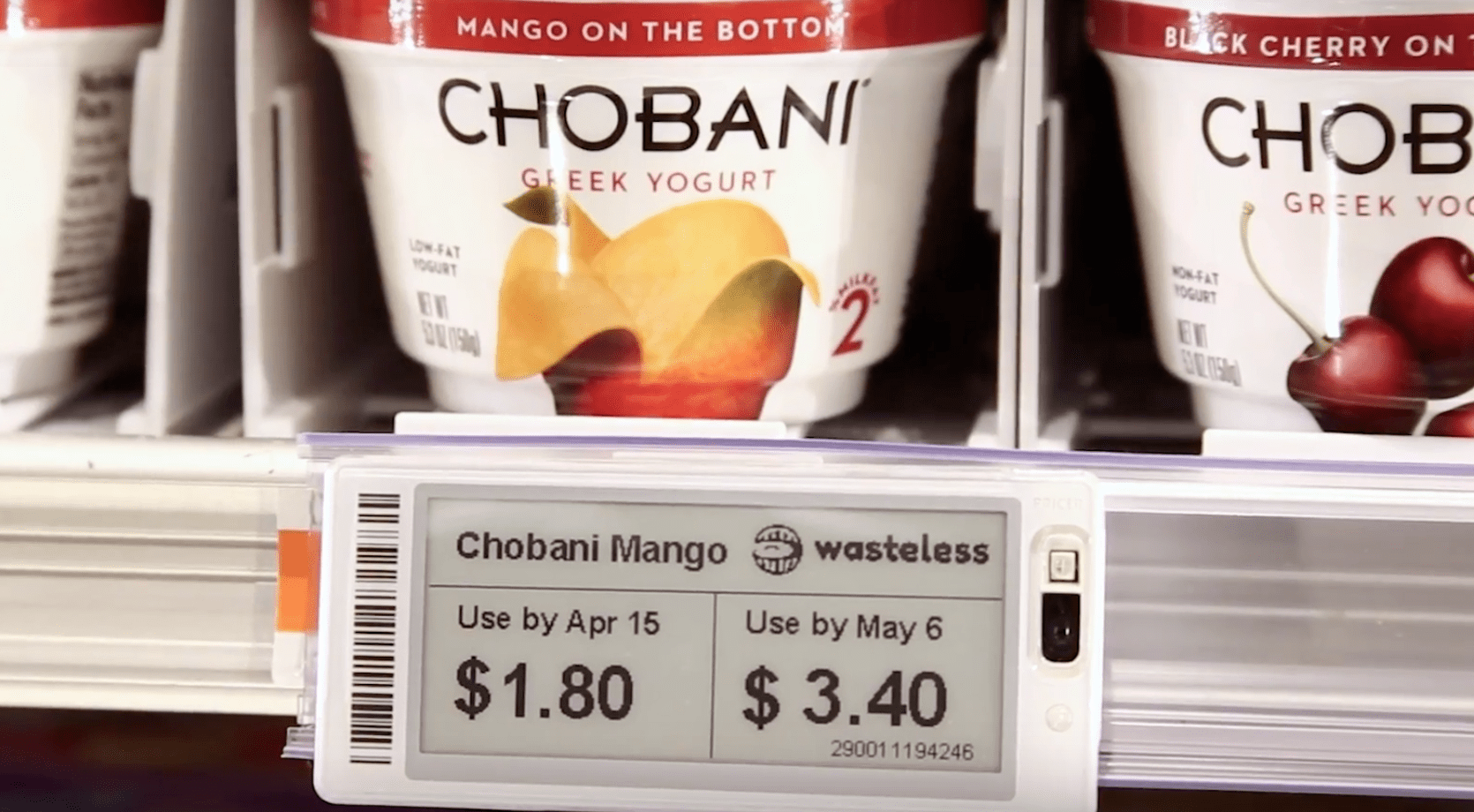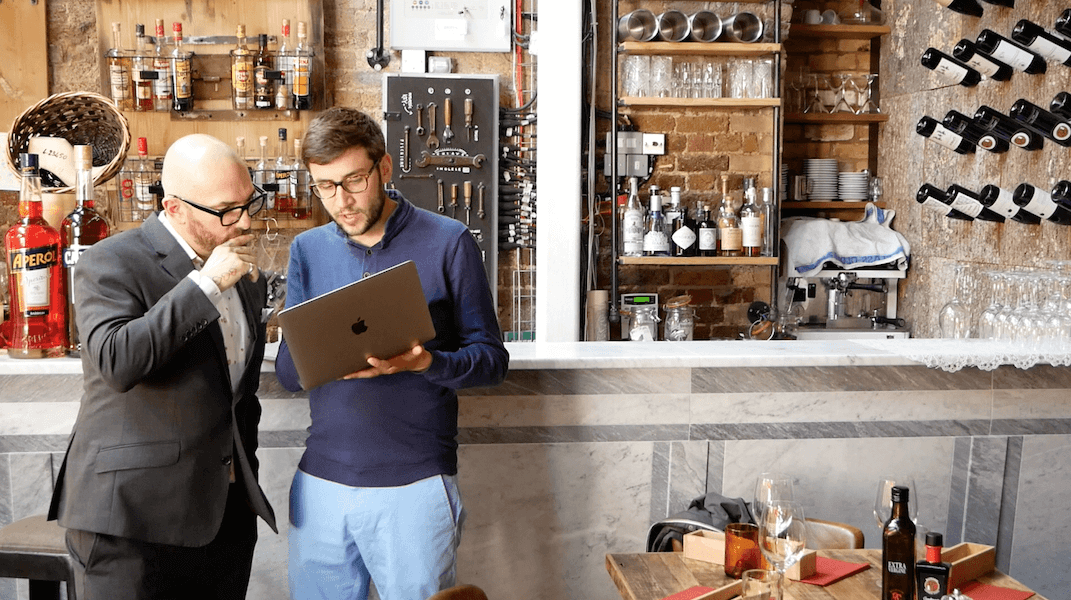
1.6 billion tonnes of food waste is created globally every year, a number so big it’s impossible to get your head around—so I’ll try to put it in other terms:
1.6 billion tonnes is the same weight as 30,303 Sydney Harbour Bridges – that is a lot of wasted food.
This large amount of global food waste has an enormous environmental impact. In fact, if food waste was a nation, it would rank as the third highest national emitter of greenhouse gases after the US and China.
The land used to grow food that is subsequently wasted makes up an area roughly 27 times the size of Queensland (around 1.4 billion hectares). What’s more, according to the UN, if global food waste was reduced by just 25%, there would be enough food to feed all malnourished people in the world.
Luckily, food waste is most definitely a solvable problem if consumers, businesses, farmers, and governments come together for a sustained effort. One big part of the solution, however, is emerging technology. Many amazing tech companies have come up with creative ways to solve the food waste crisis. I’ve put together here my personal favourites.
Food Waste Solutions
Food is wasted at every point from farm to fork, so I’ve split this list into sub-lists based on what point in the supply chain the company is focused on improving:
- Farms
- Shops
- Restaurants/food service
- Households
Farms
1. Apeel
Manufacturers have been waxing fruits and vegetables to improve their shelf-life since the 1920s, but California-based company Apeel has taken the concept to new levels.
Apeel’s invisible, edible coating is made from wasted agricultural products like leftover grape skins from wine production. Apeel’s coating can extend the shelf life of fruits and vegetables by five times! According to the New York Times, Apeel can even deliver a day-of-the-week bunch of bananas, each ripening on a different day.
This is an especially promising technology for farmers in the developing world, where the difficulties involved in getting produce to market before it spoils are themajor cause of food waste. But even in the Western world, if the product performs as promised, it could massively cut vegetable food waste in restaurants, supermarkets, and homes.

This is how a strawberry ages with and without Apeel coating
2. Hungry Harvest, Imperfect Produce and Harris Farm
Like Full Harvest, Hungry Harvest and Imperfect Produce are two companies on the front line of the battle to rescue “ugly” fruit and vegetables from rotting in fields.
Operating in the US, they take a direct-to-consumer approach by delivering food boxes of imperfect produce to unfussy subscribers. Imperfect Produce claims to have saved over 18,000 tonnes of food, and 1.2 billion gallons of water.
Closer to home, Australian food store Harris Farm have introduced Imperfect Picks – a seasonal range of fruit and veggies that don’t look perfect on the outside but are just as tasty as their perfect counterparts and up to 50% cheaper.
3. Hazel Technologies
Intended for fruit producers, Hazel Technologies‘ little sachets release a chemical called 1-MCP, a potent plant hormone which sends a strong signal to fruits that it is not yet time to ripen. Producers simply need to toss a Hazel sachet into a box of their fruit. Over a three week period, that sachet releases a safe chemical that slows down the ripening process.
Given that around 45% of all fruit grown is wasted, technology that allows more time for produce to get to the market could have a huge impact, especially in the developing world.
Shops
4.Wasteless
UK supermarkets’ efforts to price down items which are near their sell-by date seem to fall into two categories:
- Mark down their price and hope people buy them
- Wait until they’re rotten
Israeli startup Wasteless aims to bring a more data-driven approach, using small screens to display dynamically changing prices for each item on the shelf. It uses machine learning to optimise these prices. They claim to reduce waste by a third while increasing revenues.
With many supermarkets recently pledging their intentions to drastically reduce their waste—you may start to see Wasteless’s nifty little AI tags in stores soon.

Image from Wasteless, showing their AI price tag on a supermarket shelf.
5. Neurolabs
Like my own company Tenzo, Neurolabs reduce food waste by accurately predicting demand with AI. Unlike Tenzo, Neurolabs’ focus is on predicting sales for supermarkets, rather than restaurants.
The Neurolabs team, based in Romania, are currently working on perfecting their algorithms and are planning to launch the product in Autumn 2019. Initial results indicate that they can reduce supermarket waste by up to 40%.
Restaurants
6. Tenzo
Full disclosure—this is my baby. After running my own chain, Hummus Bros, for several years, I realised just how wasteful the industry was. With the technology that existed at the time, I found it impossible for our teams to get their food ordering or labor scheduling right.
Getting together with Adam Taylor, a friend from my days studying Computer Science at Cambridge, we founded Tenzo to build the software that restaurant teams really need.
One big part of that mission was allowing restaurants to predict exactly how much they would sell by creating a hyper-accurate AI sales forecasting algorithm. The forecasting uses weather data, growth trends, and all of a restaurant’s past data to generate forecasts that are 50% more accurate than you can get using traditional methods. It also allows you to forecast down to the menu item level, allowing you to dramatically slash food waste.

Check out Tenzo’s five tips for reducing food waste
7. Winnow
As the old saying goes: What gets measured, gets managed. Yet restaurants collect very little data on what food they throw away and why, and as such have no idea about how to reduce their waste.Winnow Solutions’ products aim to solve that problem by allowing kitchens to monitor their waste.
Their latest update to the product, intriguingly named “Vision”, is extremely cool tech: A weighing scale and an AI camera equipped with computer vision algorithms record the weight and the type of food as it is thrown into the bin (for example, 30 grams of steak, 500 grams of fries). The member of staff then selects an option from a touchscreen on the wall above to indicate the reason for the waste (for example, kitchen error or a customer complaint).
The result is data that, if used well, can cut food waste in half.
8. Too Good To Go
Unlike most of the tech on this list, Too Good To Go is something you can start using right now. Simply download their app to find participating food vendors near you.
Restaurants and cafes can use the platform to sell off about-to-be wasted food at a marked-down price, typically at the end of each day. They get to sell off their surplus stock while attracting new customers to try their food. Hungry, price-conscious consumers can help in the battle against food waste while enjoying delicious food at bargain prices. Everyone’s a winner!
Launching only three years ago in Copenhagen, the app has rapidly grown to have 7.5 million users in nine European countries and is working with over 15,000 food businesses. In February, they celebrated saving their 10 millionth meal!
9. Copia
“Hunger is the world’s dumbest problem” states Copia’s website, and they’re not wrong. In the US, for example, three times more food is wasted than it would take to feed every single hungry person. It’s Copia’s mission to solve the problem.
Copia’s platform allows businesses to redistribute food surplus to feed people in need by connecting them to local shelters, after-school programs, and other nonprofit organisations. Their software also allows you to track surplus trends, and more easily access tax savings, delivering a hefty ROI to the business, as well as food to the needy.
10. OzHarvest
In Australia, OzHarvest (a company close to our heart) provides a similar service to Copia, connecting surplus food from businesses to over 1,300 charities across the country.
Households
11. Olio
Shockingly, a huge 70% of post-farm gate food waste is wasted in households, rather than in restaurants, shops, or the manufacturing sector. Any tech that can help us to stop food making that all too familiar journey from the fridge straight to the bin could make a huge impact.
Olio is a platform which is trying to do just that. It’s a free app that connects neighbours with each other to flag up and share surplus food. Users just upload a photo and description, then people in the neighbourhood can claim the food before it’s wasted. They are now the biggest food-sharing network in the world with over 450,000 users.
Olio also works with businesses to reduce food waste through their “food waste heroes” volunteering scheme. Any business in the UK, Jersey, Stockholm or the Bay Area, California, can ask Olio to send volunteers to pick up and redistribute their surplus food.
12. FridgeCam
The average Aussie household throws away $3,800 of food a year. Smarter’s FridgeCam is designed to be a low-cost way to help consumers permanently alter their habits and start using up what they already have.
The wireless camera can sit inside any fridge, and takes a photo every time you close the fridge door. You can then see the contents from anywhere via a mobile app. This allows you to more easily plan meals and shopping based on what you already have at home. The app also allows you to make inventories and shopping lists, and track best-before dates, giving you the knowledge to plan for a food-waste free lifestyle.
13. Bluapple
Most people know that storing Bananas with other fruits and vegetables is a bad idea if you—that’s because our yellow friends release large amounts of ethylene gas—a signal to rapidly ripen.
Bluapple is a blue, apple-shaped product that sits in your refrigerator and absorbs ethylene gas, allowing consumers to store fresh produce for longer. It lasts for three months before it needs a refill, and is capable of extending produce shelf life by up to three times.
14. MyFoodways
Faced with a fridge full of random ingredients that you need to use? Simply tell the MyFoodways app which ingredients you’ve got and it will suggest a recipe which will use them up.
Recipe suggestions are an old idea, but unlike other similar services, the MyFoodways recipes adapt to fit what you have in the fridge, switching items with suitable alternatives, and this makes the app far more effective at finding matching recipes.
Help put an end to restaurant food waste
An admission: in the depressing intro to this article, I was actually holding back. Here are two more not-so-fun facts that are essential to understanding the depth of the food crisis we are facing:
- In the past 40 years, Earth has lost a third of arable land to soil degradation, erosion, and pollution, drastically reducing our ability to grow food.
- Over the next 30 years, the human population is set to increase by more than 35%, adding another China, plus two United States-full of people to the global head-count.
The UN estimates that we will need to double global food production by 2050, partly because of the increasing demand for meat from resource-hungry livestock. And we need to do that without taking any more land from nature, on rapidly degrading soils.
It’s a tall order, and to achieve these goals we need to do everything we can, both as individuals and as a society, to try to optimise our consumption. Cutting our embarrassing levels of food waste is an easy win and a huge part of the puzzle, and thanks to the companies above, we now have the tools to do it.
If you are in any way involved with food, please reach out to the companies in this list that excite you. In all cases, you’ll be saving money and doing good.

News you care about. Tips you can use.
Everything your business needs to grow, delivered straight to your inbox.


